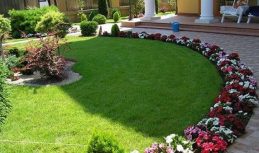The rose, captivating with its sophistication and grace, is rightfully considered the queen of flowers. It is impossible to convey in words the scent that the curb roses exude, and the emotions that the gardener experiences when walking along garden paths and seeing such a picturesque picture.
Material Content:
Description of varieties and nuances of growing
Border roses are represented by undersized compact bushes up to 60 cm high with a large number of flowers against a background of graceful, glossy leaves.
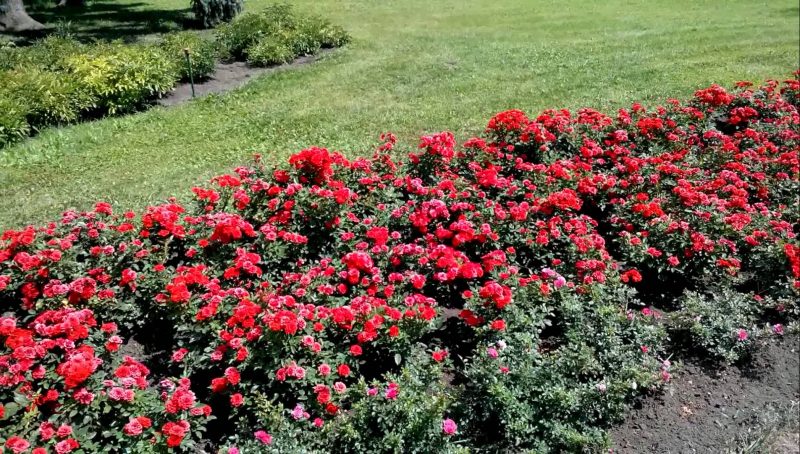
Among the features of the impregnable beauties of this group are:
- unpretentiousness, thanks to which even a beginner gardener can cope with the cultivation of flowers;
- the presence of mainly double flowers of various colors;
- the duration and frequency of flowering, which increase the decorative value of border roses;
- frost resistance;
- the possibility of widespread use of flowers in landscape design due to the large number of varieties.
Popular varieties of border roses:
- "Clementine" - branched shrubs resistant to disease and frost up to half a meter tall with lush inflorescences consisting of apricot double flowers.
- “Baby and Maskerd” - roses of a compact form with a height of up to 40 cm. They are distinguished by not the monotonous color of the petals, which changes from base to edge from lemon to red.
- "Madey" - thanks to the densely leafy shoots, compact bushes of a long-loved variety seem sprawling. With prolonged flowering, an abundance of bright flowers of a blood-red color is noted.
- The pixies. The variety will appeal to lovers of pastel colors. Roses blooming throughout the summer stand out as snow-white or slightly pinkish petals with pointed edges.
- "Diamond Sweet Dream."For creating vibrant compositions, an excellent solution would be to plant a compact variety with yellow-orange flowers that contrast effectively against the background of emerald leaves.
Choosing Healthy Seedlings When Purchasing
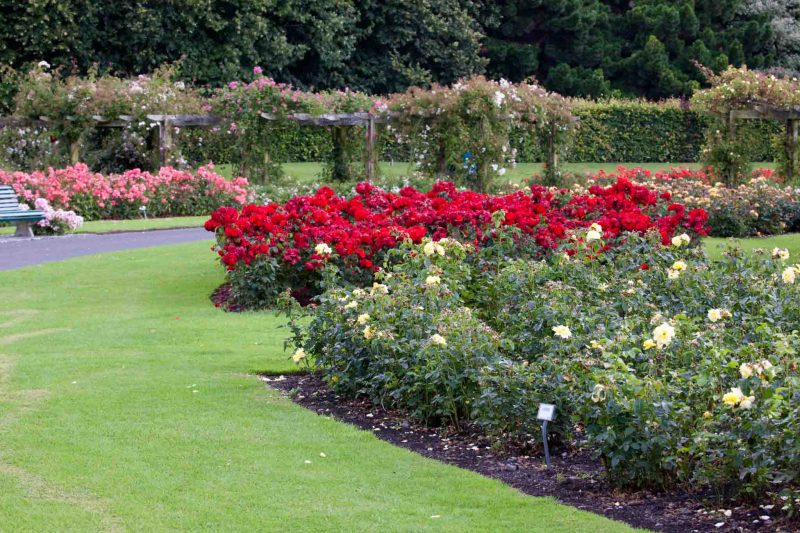
To make the queen of flowers take root and decorate the garden with lush inflorescences, you should use the following recommendations when buying planting material:
- It is important to first determine the variety, having studied its frost resistance, soil requirements, moisture and other characteristics.
- Buy quality seedlings should be at specialized points where consultants will be able to provide all the information of interest.
- When purchasing grafted roses, you need to find out on which rootstock the vaccine is made, since resistance to frost will depend largely on this.
- It is better to choose three-year-old seedlings that have managed to sufficiently develop the root system during this time.
- Planting material should have 3 developed shoots, living roots and sleeping buds.
Planting border roses in the open ground
Before proceeding to the direct planting of roses in open ground, you should choose a place.
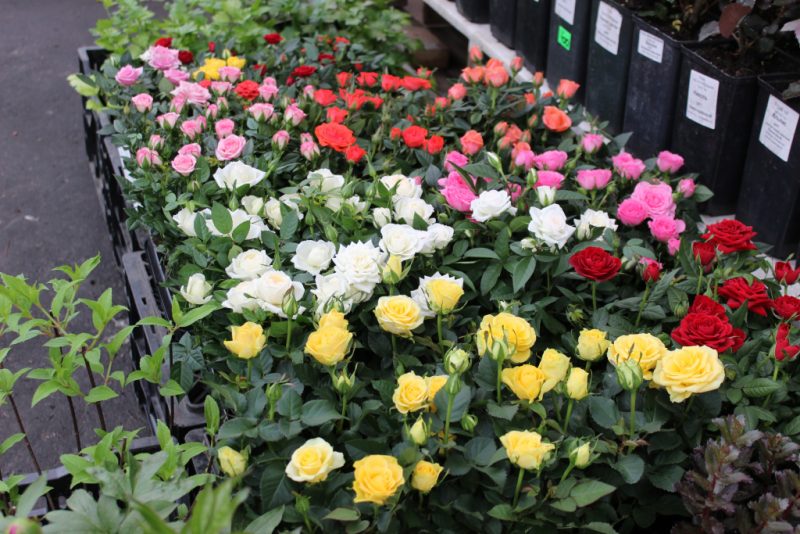
The optimal area should be well lit and protected from the winds.
Of no small importance are the predecessors, which should not be pink. In order for the bushes to grow quickly, it is worth giving preference to light, loose soils with a good fertile layer and drainage qualities.
Planting seedlings in the garden, which falls in the spring (after the disappearance of the threat of return frosts), is carried out as follows:
- Dig holes with dimensions slightly exceeding the similar parameters of the root system of planting material. The distance between the recesses is maintained within 25-30 cm.
- Sand pits and organic fertilizers are poured into the pits in the form of compost, humus.
- Saplings with straightened roots are established.
- The pits are filled with the extracted arable layer so that the flower necks are deepened by 3 cm.
- Trunk circles are compacted and watered.
How to care for flowers
Caring for border roses is quite simple, in comparison with other varieties of exquisite flower, and includes only a number of standard events.
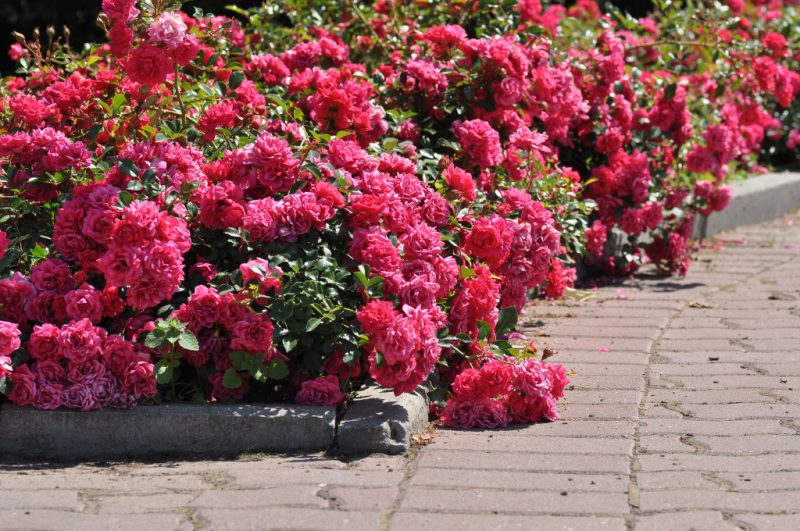
Water the bushes should be systematic, but in small portions.so that the soil does not have time to dry out, but also is not waterlogged. Moisturizing the roses is carried out under the root, which helps to avoid getting water drops on the shoots.
Compact bushes respond well to additional nutrition, improving the condition of the fertile layer.
- In early spring, for digging, it is worth making compost at the rate of 6 kg per m2.
- Before the formation of buds and during the flowering period, top dressing is carried out using phosphorus-potassium fertilizers.
- In the fall, stop choosing organic.
To preserve the cleanliness of the beds and the loose structure of the soil, you should systematically loosen the trunks, while removing weeds. A layer of mulch under the bushes will also not be amiss.
The formation of a lush proportional bush occurs in the first year of cultivation, when the stems are pinched after the appearance of the 5th leaf.
Throughout the season, sanitary pruning is carried out, in which sick, injured shoots and faded inflorescences are removed. In grafted roses, the shoot directly from the root neck is necessarily destroyed.
Winter preparations
Despite the frost resistance, the curb rose hides in the garden. In autumn, bare shoots are shortened, and foliage is burned. After the first frosts, the bushes swell up to 20 cm in height, after which they are covered with fir spruce branches, which well protects the flowers from the cold.
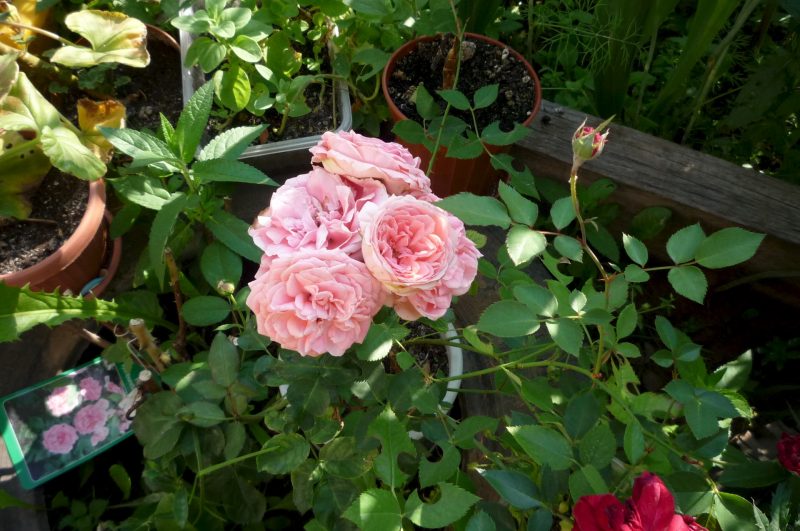
Border varieties of roses can be attacked by a spider mite, aphid, sawfly. The most effective and quickest way to get rid of pests are insecticides, which can be used for preventive treatment in early spring. Of the diseases, the most common are powdery mildew and rust, the peak of development of which occurs in wet weather. To cure the affected plants, the diseased parts of the shoots should be removed, and the plantings should be sprayed with fungicide.
Reproduction of a border rose
Popular methods of reproduction are vegetative, preserving the signs of the maternal specimen.
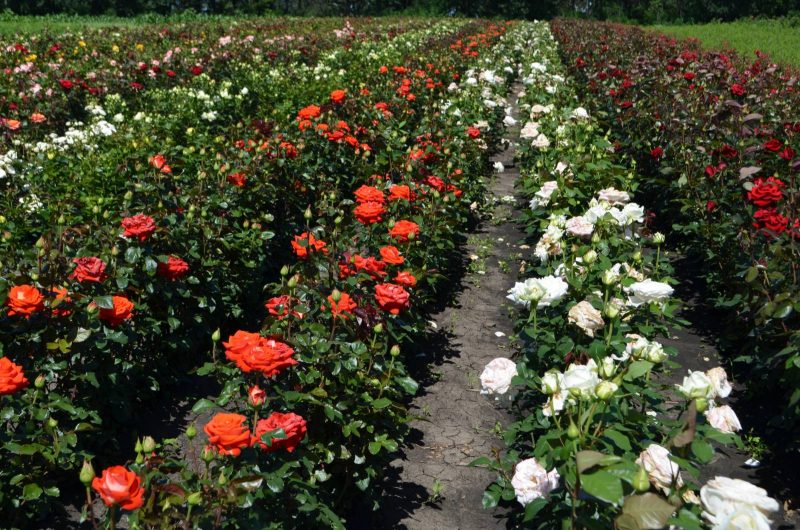
For propagation by cuttings, semi-lignified cuttings with 3 buds, which are treated with a growth stimulator, are cut. The prepared material is buried in the ground, where it is covered with glass jars. After 1.5 months, when the cuttings take root, new plants are transferred to a constant place of growth.
The procedure for dividing the bush is carried out in spring or autumn. The bush is removed and the sharp, sterile instrument is divided into parts, each of which must have developed roots and stems. Delenki landed on a pre-prepared site.
Use in landscape design
Border roses are often used in the design of parks and gardens:
- for framing tracks;
- in flower arrangements in flower beds of various configurations;
- in group plantings of varieties with different colors;
- as a tapeworm near the entrance to the gazebo or against a background of bright green lawn.
The curb rose is an impregnable beauty that, with simple care, will bloom profusely and fragrant all summer, bewitching others with its natural charm.



